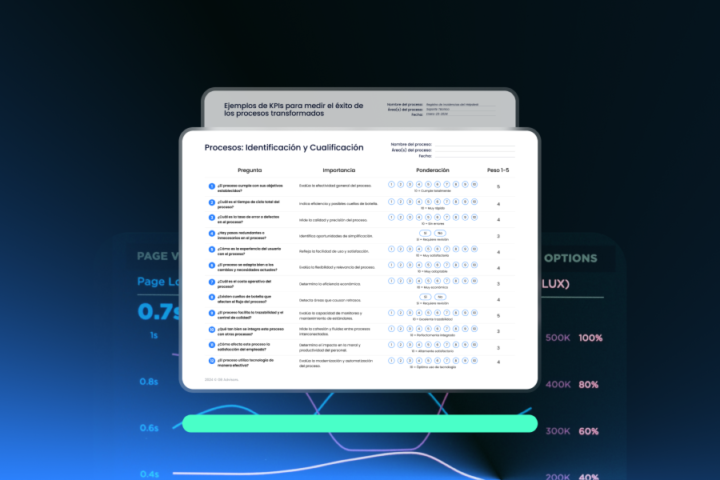In a hyperconnected world, data management is an increasingly robust and complex task. According to reports, by the year 2020, each user is going to generate 1.7MB of information per second.

Although this number seems like a gold mine for technology departments, less than half of this data will be used actively by companies. The rest of the information will become part of a category called “Dark Data”; an unexplored haze of information that no one can get rid of.
However, studies show that dark data is a key resource for improving the company’s operability.
In this article, we lay out what Dark Data is and how to use it efficiently.
The Dark Data, the traces of our digital activity
All companies accumulate Dark Data in their systems. We can define it as unstructured assets produced by the repetitive tasks of managers, employees, clients, and partners. This content is often difficult to analyze, either by the absence of categories to order them, their little relevance to the economic activity of the company or the type of folders where they are hosted.
In this way, in any data warehouse, we can find an enormous amount of dark information such as:
- Log files
- Information from Former Employees
- Unused survey data
- Videos, images and voice memos
- Financial Statements
- Digital account information and email residue
- Activity histories
- Others
On the other hand, poor interpretation of data can also promote the accumulation of “dark matter” in systems. At the same time, this malpractice implies the loss of useful statistics for the development of organizations or key information for the resolution of computer problems.
In any case, Dark Data must remain in the systems. Deleting any residual information may involve opening new vulnerabilities, legal issues, and risks of non-compliance.
The utility of dark data

Although Dark Data is often used as a simple backup for digital activities, its benefits are much wider. All that is required is a more integrative approach to the functions of the various IT assets.
In most cases, data becomes obsolete due to lack of cross-departmental communication, individual application management, and excessive content prioritization.
In this way, when all the biases surrounding data collection are demolished, Dark Data begins to make sense and becomes relevant within organizations.
About adding value to business processes
We can accelerate the business from multiple perspectives with the usage of Dark Data. For this, you need to review and label elements within accessible warehouses and those in the hands of your external collaborators.
Also, keep in mind that to maximize the potential of these assets, it is necessary to draw a north on the needs and objectives of each department, and thus analyze the information in a comprehensive sense.
These are some of the processes you can optimize through residual data management:

Marketing and sales optimization
Geolocation data, interrupted sales processes and customer service audios are useful elements to strengthen marketing and sales strategies. In this sense, while a Light Data analysis can provide information about the positive points of your funnel; Dark Data reveals minimal but significant errors that generate the loss of clients or affect customer satisfaction.
Better commercial approaches
Dark data is also useful in market research. For example, you can collect barcode readings to determine the sales level of a product at specific times of the year. Likewise, in-stock product requests and in-store customer records can shed light on consumer needs.
UX improvement and error detection
Log files and activity histories. With this data, you can accurately know the behavior of your web traffic and detect dangerous patterns within your systems. You can also use computer performance information, old incident notifications, as well as request reports to take preventative action on hardware and software management.
Best Practices for Dark Data Management
As you can see, Dark Data provides different observations from the same point and facilitates the diagnosis of situations in the company. However, you must take care of the health of your dark data to get truly relevant readings.
Start implementing the following practices within the IT department:
Perform frequent audits
Monthly audits are necessary to avoid data disruption. Similarly, your team should categorize and classify dark data from previous periods; as well as prevent the accumulation of decontextualized information in accessible warehouses.
Once you have classified Dark Data into useful or obsolescent tags, we recommend keeping seemingly useless data close by as it may be useful to you in the near future.
Apply encryption standards
It is important to assign encryption protocols to all your databases. In this way, you avoid the leakage of vital information that you may not yet have classified or identified.
Remember that cybercriminals can hop on your systems for long periods of time looking for vulnerabilities, sensitive data and “hidden treasures”. They might be able to find lucrative information in data warehouses with Point of Sale requests or industrial process files.
Use data retention policies

If you wish to search your dark data you must consider the legal implications of this task.
Keep in mind national and international privacy requirements. Also, it is important to specify the applications of your data retention policies.
In this way, you can obtain the consent of third parties before analyzing their residual files.
Use IT Operations Management tools
Centralizing IT operations makes it easy to process a variety of data. It also allows you to have a clear picture of the needs of each department, which translates into a better interpretation of Dark Data.
An ideal tool for IT Operations Management can integrate ITIL Processes, Management Discipline and CMDB of your pre-existing systems; as well as increases the visibility of the infrastructures.
At GB Advisors we can offer you expert consultation to optimize your digital assets. Contact us.



